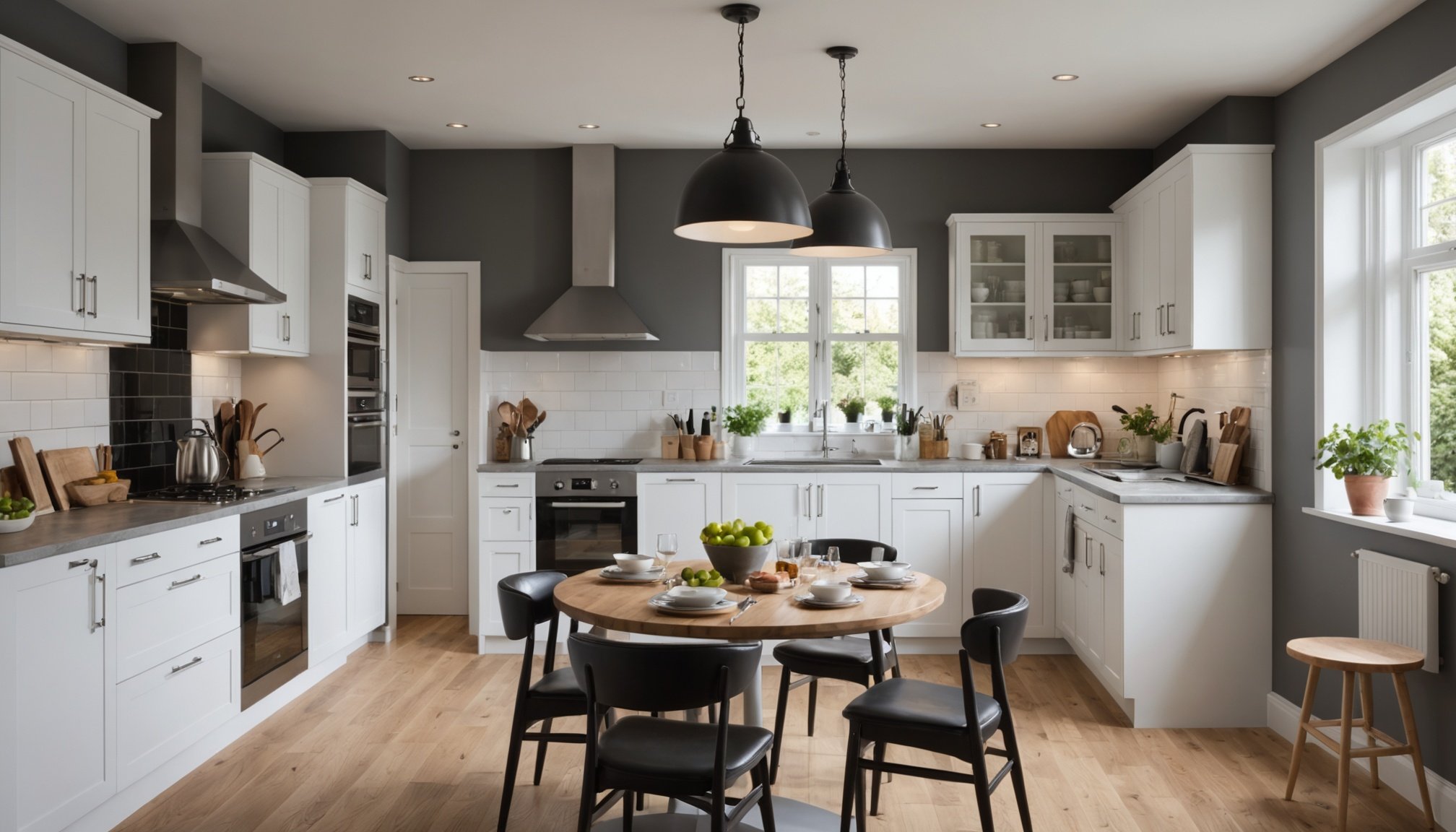Designing a small kitchen can often pose a unique set of challenges. However, it opens up a world of creative possibilities when the aim is to integrate a dining area into a compact space. With our homes becoming more multifunctional, the kitchen has evolved from a mere cooking zone into an inviting venue where family and friends can congregate. As such, the task of melding culinary and dining spaces has become increasingly significant. Let’s explore some thoughtful considerations that can transform your small kitchen into a cozy yet functional dining area.
Maximizing Space and Functionality
When it comes to small kitchen design, every inch counts. The idea is to maximize both space and functionality while maintaining a visually appealing environment. This requires a strategic approach to layout, storage, and seating options.
In parallel : How can I incorporate cultural dishes into my kitchen repertoire?
Strategic Layout
Opting for an open layout is advantageous in small kitchens. Removing barriers between the kitchen and adjacent areas creates a seamless transition and a feeling of spaciousness. Islands or peninsula counters can serve as both cooking and dining areas, eliminating the need for separate tables.
Clever Storage Solutions
Small kitchens demand innovative storage ideas. Consider installing vertical cabinets or using open shelving to store everyday items. These methods save floor space and keep the space organized. Opt for multi-functional furniture, like benches with built-in storage, to ensure everything has a designated spot.
In the same genre : How can I incorporate more plant-based meals into my cooking routine?
Flexible Seating Options
Choosing the right seating is crucial. Compact dining chairs or stools that tuck neatly under counters are excellent choices. For a cozier setting, banquette seating can be both practical and stylish. It offers comfort and space-saving benefits, turning an unused corner into a delightful dining nook.
By incorporating these strategies, you can optimize your small kitchen’s potential, making it a hub of style and efficiency.
Design Aesthetics and Interior Appeal
While functionality is vital, the aesthetic aspect of a small kitchen should not be overlooked. A well-designed space not only looks appealing but also feels welcoming.
Harmonious Color Palette
Choosing the right colors can make a significant difference in small spaces. Light colors, especially whites and pastels, can make a kitchen feel open and airy. Consider matching your cabinetry with the wall colors to create a seamless flow.
Thoughtful Lighting
Lighting plays a pivotal role in defining the space. Integrate various lighting options, including ambient, task, and accent lighting, to highlight different areas. Pendant lights above an island or dining table add a touch of style and elegance.
Artistic Elements
Incorporate artistic touches like a unique backsplash or decorative elements that reflect your personality. This can be as simple as colorful dishware on open shelves or a statement piece of art on a blank wall.
By focusing on these design elements, you will create a small kitchen that is both functional and visually stunning.
Selecting the Right Appliances
Choosing the right appliances is crucial when working with limited kitchen space. The goal is to select units that offer high efficiency without overwhelming the room.
Compact and Versatile
Consider investing in compact appliances designed for small kitchens. For example, combination ovens/microwaves or slim-line dishwashers can save space while providing essential functionalities.
Integrated Appliances
Opt for integrated or built-in appliances that blend seamlessly with your cabinetry. This not only saves room but also maintains a smooth, cohesive look.
Energy Efficiency
Prioritize energy-efficient appliances. Not only do they consume less power, but they also contribute to a more sustainable environment.
In selecting the right appliances, you ensure that your kitchen remains both functional and environmentally conscious.
Final Considerations
Creating a dining area within a small kitchen requires careful planning and consideration of various elements. Here are some final thoughts that might guide your design efforts.
Personalization
Your kitchen should reflect your style and meet your needs. Consider customization options that cater to your preferences, whether that means having a specific island design or unique storage solutions.
Flow and Accessibility
Ensure that the layout promotes easy movement and accessibility across the kitchen. The positioning of appliances, seating, and tables should allow for smooth navigation.
Long-Term Vision
Think about the long-term usability of the space. As your needs evolve, the kitchen should adapt accordingly. Consider elements that can be easily modified or updated to maintain functionality and appeal.
Incorporating these considerations will lead you to a small kitchen that is not only efficient but also a true reflection of your lifestyle.
Incorporating a dining area into a small kitchen is not just about maximizing space, but about crafting a harmonious blend between functionality and aesthetics. Thoughtful design choices can transform a cramped kitchen into an inviting hub for meals and conversations. By focusing on strategic layouts, efficient storage, appealing design aesthetics, and carefully selected appliances, you can create a space that is both practical and stylish. Remember, the essence of a kitchen is in its ability to bring people together, and with these ideas, you can ensure that your small kitchen serves as a warm and welcoming heart of your home.











